Table of Contents
What Got Me Curious About Floatation Therapy
Floatation therapy has been within my interest radar for quite some time. Reviews from other chronic illness bloggers keep popping up on my social media feeds, and they are all positive. Most of these bloggers are caucasian women with fibromyalgia, however. There’s even an entire research project dedicated to it called the “Fibromyalgia floatation Project”. I wondered if it would have the same effects on someone of Asian ethnicity, who suffers from Sjögren’s and Lupus.
There’s a whole FAQ and benefits section on their website so I won’t repeat them in this review. I’ll be focusing more on my personal experience, as well as how it did or didn’t help with my own chronic pain.
*Disclaimer: This article is meant for educational purposes and is based on the author’s personal experiences. It is not to be substituted for medical advice. Please consult your own doctor before changing or adding any new treatment protocols. This post also contains affiliate links. It will cost you nothing to click on them. I will get a small referral fee from purchases you make, which helps with the maintenance of this blog (approx. $100/month). Read our Privacy Policy page for more information. Thank you!

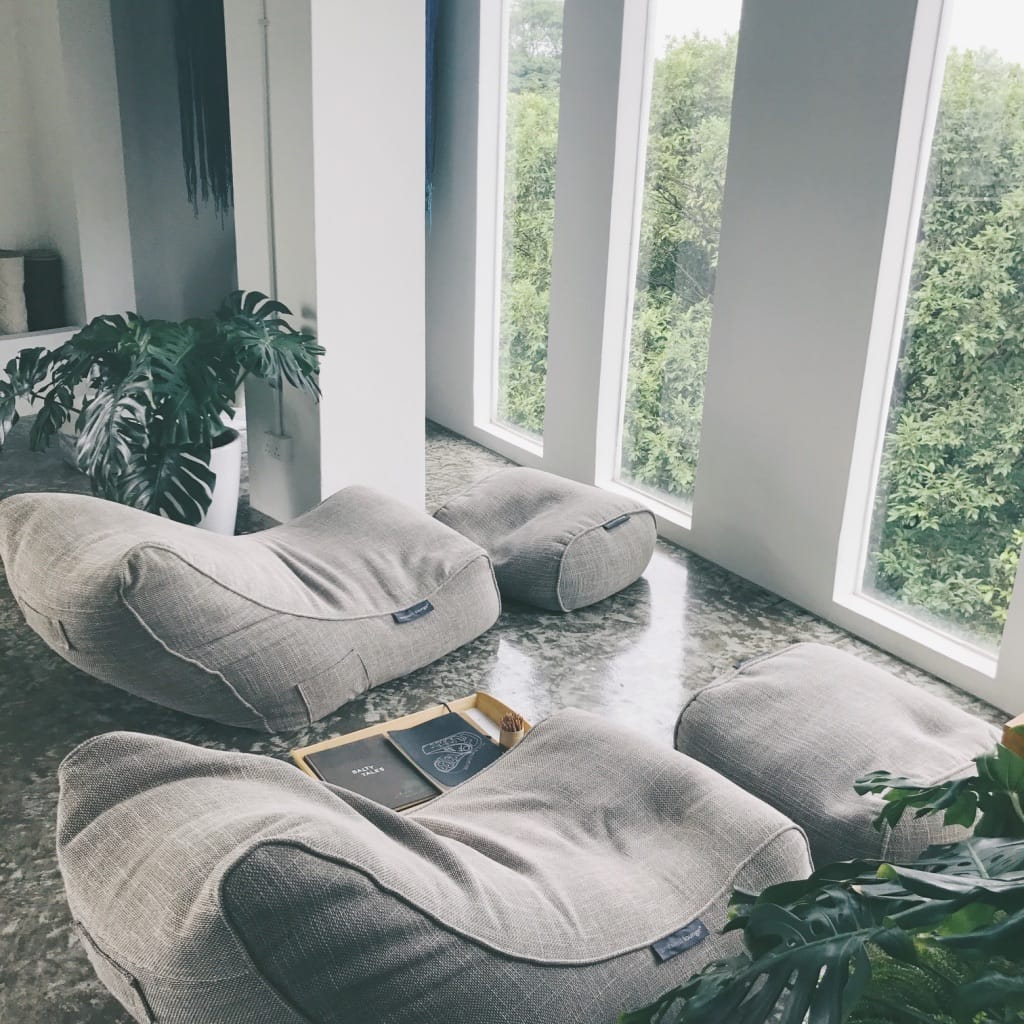
Their Space at Kampong Bugis
I received a float session from Palm Avenue Float Club (PAFC), in exchange for this review. As far as I’m aware of, it’s the only place offering floatation therapy in Singapore currently. I love spaces that are bright, warm and flooded with sunlight. Their outlet at Kampong Bugis was gorgeous in that sense! Even without floating, the environment is relaxing in itself. There are fragrant, grain-filled seats that you can lounge upon, with books on art and floatation within arm’s reach.
Palm Avenue Float Club Online
Their blog section is also a beautiful online space. It isn’t some marketing gimmick with boring posts stuffed with keywords. Instead, it is a reflection of the founder, Derrick’s, passions and beliefs in the benefits of floatation therapy. The art collaborations are my favourite, and the post-float reflections are a beautiful collection. You can also get to know the crew better through casual interviews here. It’s obvious that they’re a pretty open-minded bunch!

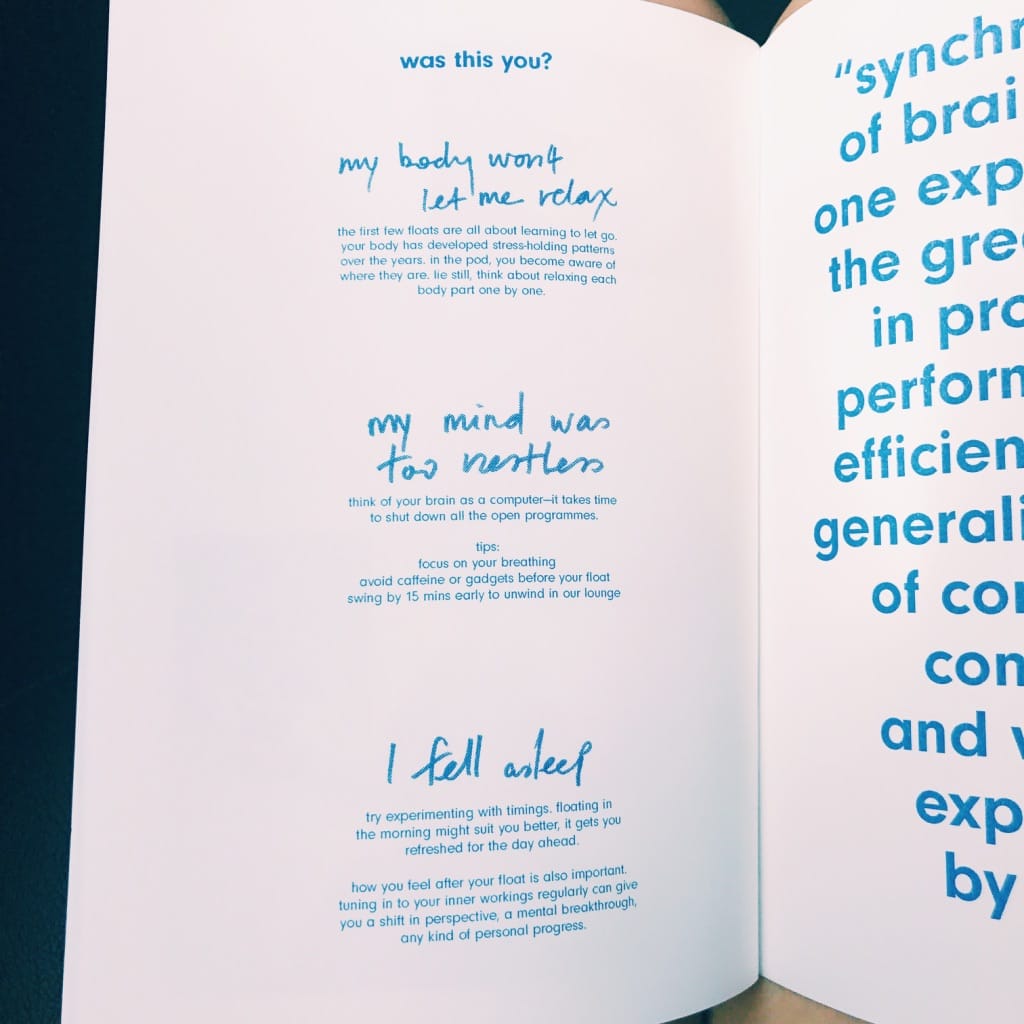
What Exactly is Floatation Therapy?
Believe it or not, floatation therapy began as a scientific lab experiment by John C. Lilly, an American neuroscientist and physician, in 1954. It started out as a study on what the brain needs to remain conscious. Conducted using R.E.S.T. (Restricted Environmental Stimulation Therapy) – or sensory deprivation – it works by shutting down stimuli to your brain. This allows it to transit from an active alpha state, to beta or even theta.
Your mind and body has the opportunity to resynchronise, as it triggers the parasympathetic response. In layman’s terms, it triggers the ‘rest-and-digest’ state, and reduces the ‘flight or fight’ response. And as those with chronic illnesses know especially well – stress is the root of flare ups and chronic pain. Some of the other benefits include mental clarity, better sleep and increased physical recovery.
This article on Time explores the science behind floatation therapy, as researchers monitor the brains of participants via MRI. Harding, a soldier who suffers from PTSD (post traumatic stress disorder), also shares his experiences. floatation therapy may also help with several medical conditions such as heart and rheumatic problems.
Is Floatation Just a New Hipster/Alternative Fad?
This was also one of the first thoughts I had! As you can see from above, it’s been around since the 1950s, so it isn’t anything new. The design of the tanks and solution used has evolved over the years for maximum benefit and comfort (they had to wear oxygen masks in the beginning!). Now there is about 500kg of epsom salt/magnesium sulphate in each tank (depending on the float centre you visit). So it’s kind of like floating in the dead sea, where you remain buoyant.
Oh and the only other person who was there for a float that day was a lady in her late fifties or sixties, looking fabulous in bright red lipstick! So it’s definitely suitable for the elderly as well 😉 It is also beneficial for pregnant women, as the weightless environment provides relief from the strain on their bodies. (Do check with your doctor first before trying it out, as always.)
Preparations for Chronic Illness Beforehand
Excitement filled me pre-float, and I was banking on it to relieve some of the aches in my body. This is exactly – as I learned later – how you should not approach it. Instead, you should enter with no expectations at all.
I have epilepsy and had to acquire my neurologist’s approval beforehand. He gave me the green light as my condition is well controlled. Those with hypertension, skin problems or schizophrenia are usually not permitted to float. If you have any medical condition, do check with your doctor before booking an appointment.
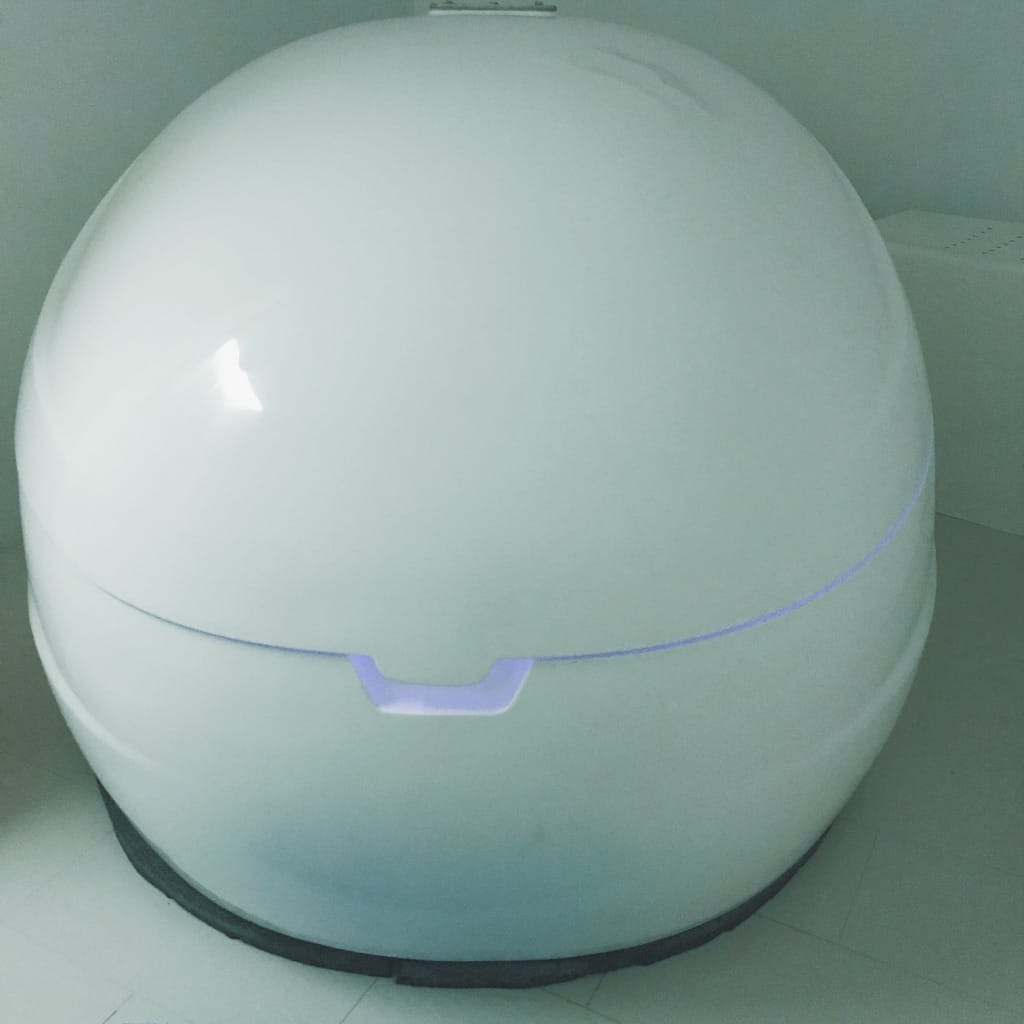
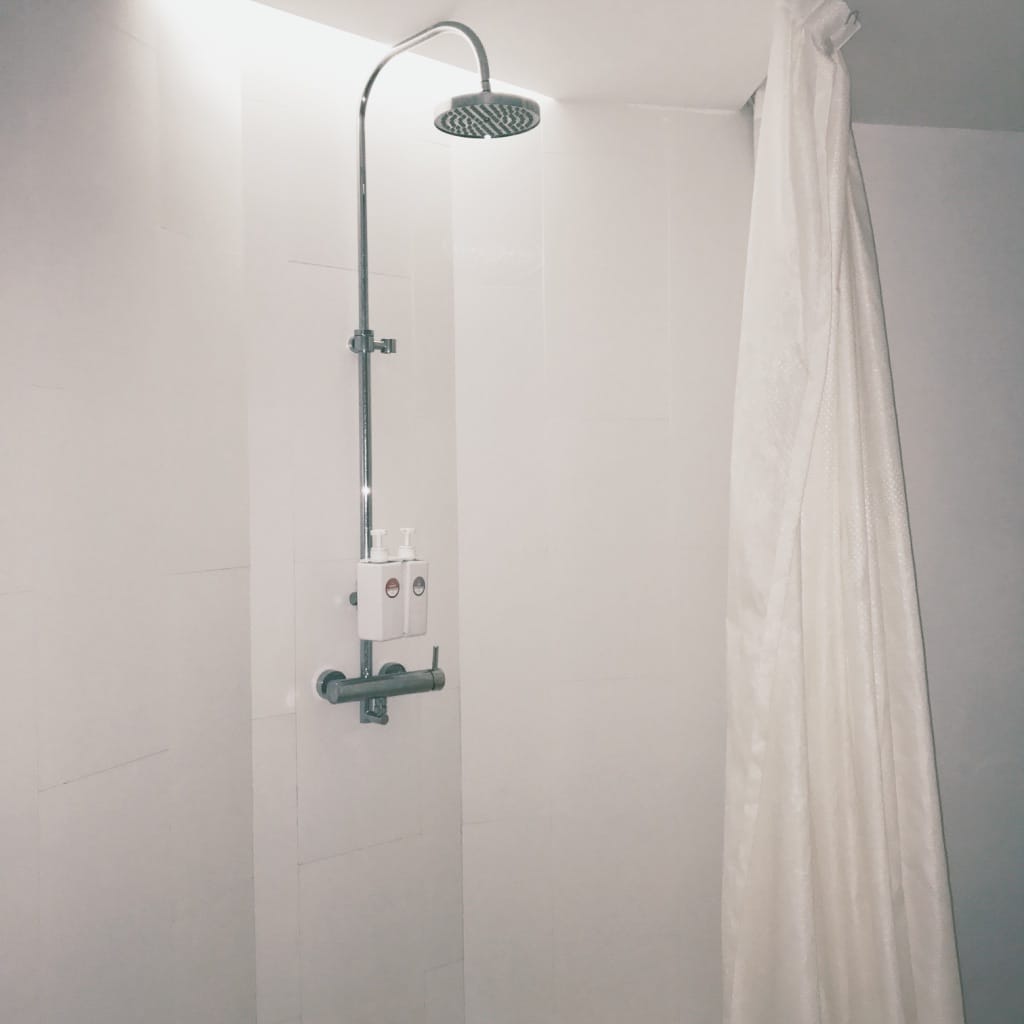
Getting Ready to Go in!
The first thing I noticed was that the liquid soap and shampoo smelled like a spa. The water in the shower was nice and hot, and I emerged smelling like fresh lemons, with a hint of vanilla or cocoa butter. There is a pair of disposable earplugs and neck rest provided for those who need them.
I was impatient to enter the pod! I loved the fading neon lights, but hit the ‘lights out’ button after closing myself in. There is nothing else in the tank except for a spray bottle of fresh water, for clearing away accidental salt on your face. There’s also an emergency button inside, so don’t worry if you’re feeling unwell and need to call for help.
Initial Thoughts and Sensations
The first thing I noticed was how silky the water felt over my skin. I glided my hands all over my body (ahem), marvelling at how nice and smooth it felt. Epsom salts help to moisturise your skin, and I exited the pod later on without so much as a wrinkle on my fingers.
I tried to sink myself, yes I did. While it didn’t take much effort to put my foot down, I floated up like a buoy upon release. I tried floating face down, and found it a comfortable position, too. But you can’t remain that way the whole time, without straining to keep your neck out of the salty water.
I tried placing my hands in various positions (what do you do with them when you don’t have your mobile phone, right? ;)). I clasped them behind my head, placed them by my side, and on my stomach. I found my favourite position (behind my head), and proceeded to drift off.
Others have said that the pod is big enough to float in comfort, so I must be greedy as I kept wishing that it was bigger. My hands and legs kept drifting apart in the shape of a giant starfish, but the boundaries kept pushing me back.
Letting Go is Never Easy for Me
The weightless sensation that people liked was disorienting and disturbing to me. After several traumatic hospital experiences where I lost control of my body, I’ve had issues with letting go. I also felt a little nauseous from the mild bobbing. Some research later said that those under extreme stress might feel that way. I’m not sure what exactly I’m stressed about; perhaps it’s the toll of the illnesses themselves, plus my daily medication (over)load.
Jean, the float crew who was there that day, told me that it was okay to pull my shoulders back to allow my chest to open up. I found this uncomfortable, because my posture is horrendous. It was a stark but good reminder of the need to correct it, and I found it beneficial to remain in that position for an hour.
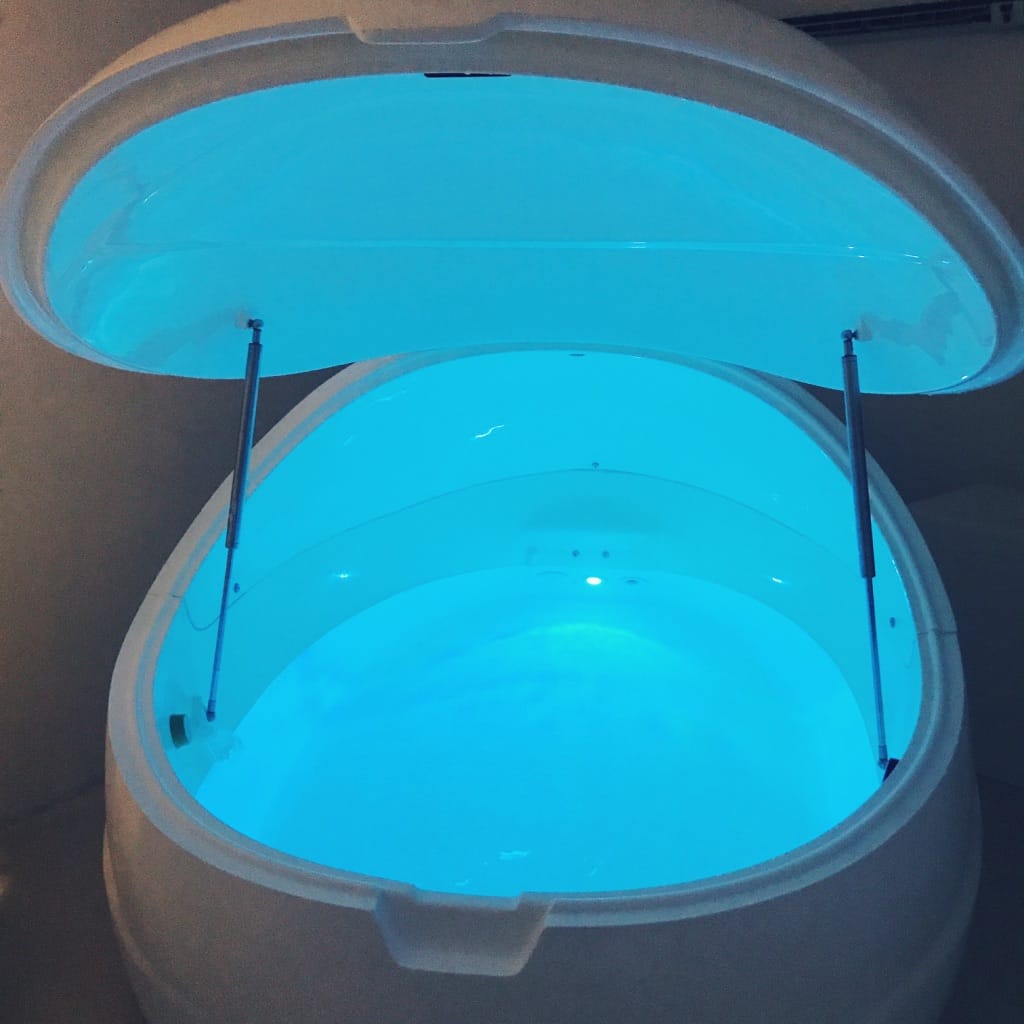
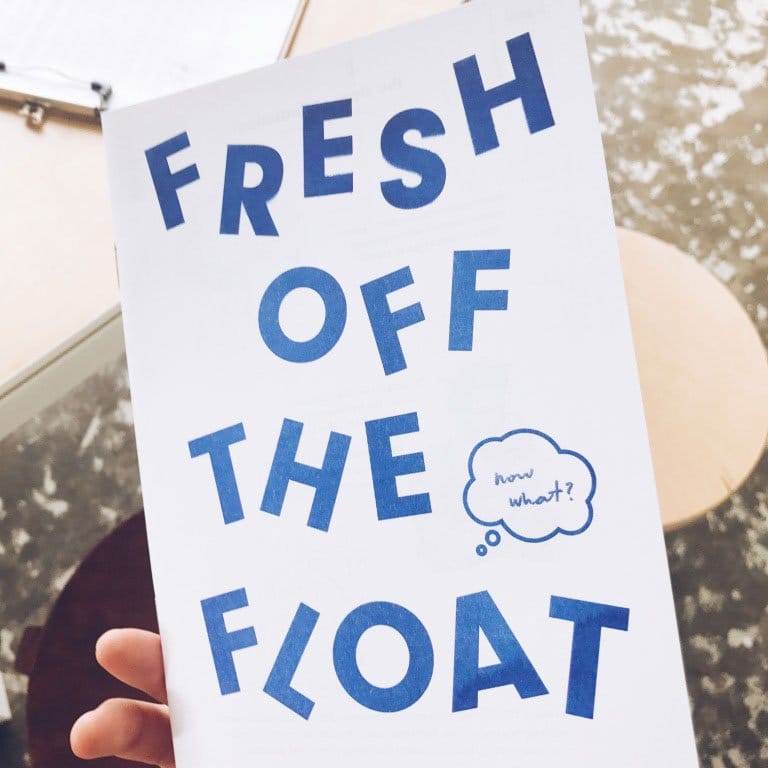
As Time Went On…
After the peaceful music had faded away, my mind kept wandering off, as I wondered about what to think about for a whole hour. The ironic thing was, I couldn’t wait to get out after only five minutes, when I had wanted to try this for ages! This is a behaviour I need to unlearn – I never live in the present moment and thus, never fully enjoy my life. I read that you start to relax after 15 minutes or so, but I took longer than that. I drifted off to a trance-like state after 30 – 40 minutes. I was asleep, yet my mind kept repeating my schedule for the next day.
My psychiatrist was trying to describe hypnotherapy to me once, and it dawned on me that this must be the state she was talking about. I did some research when I got home, and learned that this is the ‘theta state’ of awareness. It is a state reached through deep meditation or normal daydreaming. floatation makes this process easier, because all you have to do to arrive at this state, is to give it enough time.
I took my earplugs out after a while, just to see which I preferred. I liked that I was more aware of noises, such as people walking by in the corridor, and the sound of my heart beating. Now this is something you don’t quite hear about floatation therapy, but some of the salt got stuck in my ear for days after. I was a little worried due to my weak immune system, and rubbed my ear until it was sore. Some ear drops from the pharmacy fixed that 😉

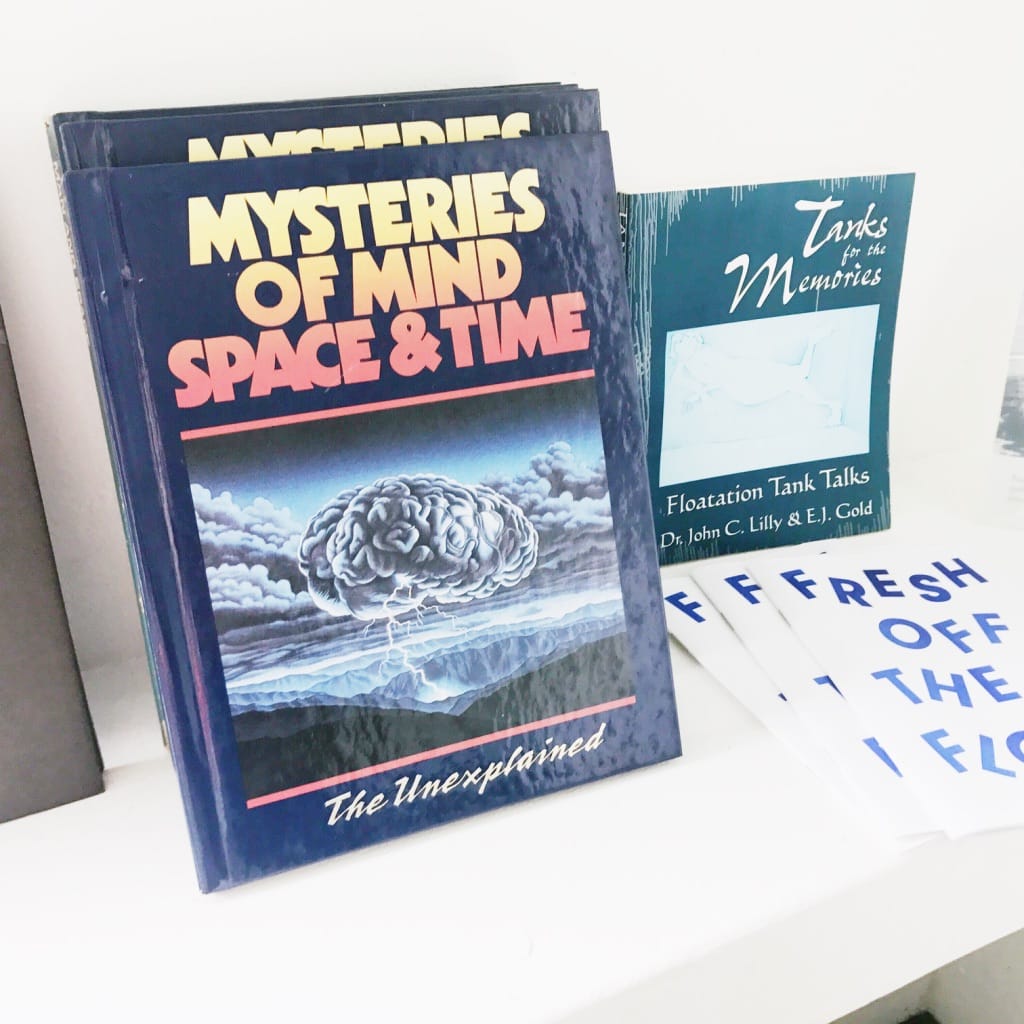
Tail End of the Float Session
The music came on again too soon. I hadn’t realised that I had fallen asleep! I got out and took another refreshing shower, before hopping out to the bright space for some tea. Now…we’re all looking forward to this part…how did it make me feel?
To be honest, disappointed. To be fair, I have defective cognitive thoughts which include ‘magical thinking’. I was somehow hoping that my full-body Sjögren aches would disappear, but they remained.
What did happen was that I came out feeling very relaxed, and free of any stress! My breathing was deep, calm and easy. I felt serene and clear-headed, as if my depression and anxiety had fallen asleep. It was amazing how I felt so rested, as I had forgotten how that was like – I haven’t felt like this for years. It felt better than a full night of sleep!
It’s a unique experience which I can’t really compare anything to. While a massage is also relaxing, floatation expands beyond the body. A yin yoga class is the closest I can associate it to, but with longer lasting and deeper effects, at least for me. I became more aware of the little things around me, such as the chirping of birds, and the breeze on my face.
Research has also shown that floatation affects the brain the same way as antidepressants do. Having been on such medications myself, I can testify that the feeling is indeed similar. But these medications can become addictive, and wear off over time. I also take 21 pills every single day, so if I can spare myself from ingesting more, then why not? Besides, drugs all come with side effects that give your body extra housekeeping work. floatation therapy is the perfect substitute which aids with detoxification as well!
Back at Home, Post Floatation Therapy
Guess what happened when I got home? I took a two hour nap, as if an hour of floating wasn’t enough! But I felt way too relaxed and blissful, and couldn’t keep my eyes open. The calm feeling lasted even after I woke, and gave me the boost I needed for an event I had in the evening. (Usually I’m exhausted and achy by dinner time, so that was nice!)
Would I Do it Again?
I’ve only tried it once, and would like to give it a few more attempts before concluding. Your body takes about three floats before it gets used to the sensation, and learns how to relax. As someone with chronic illnesses, I am always on the lookout for complementary therapies that are simple and non-invasive. Because if they help, the pros far outweigh the cons. It would be a dream come true just to be in less pain every day; an energy boost would be a bonus!
$90 for a 60 minute float seems pricey to me, as massages are also relaxing, and much cheaper. A three session package reduces the price to $75 per float, and I will be trying this out. I’ve already gone for my second float at Palm Avenue’s Waringin Outlet. Stay tuned for the update after I complete my next three floats!
P.s. If you think that a loved one might enjoy floatation therapy, Palm Avenue also sells gift cards here!
If you liked this article, sign up for our mailing list here so you don’t miss out on our latest posts! You will also receive an e-book full of uplifting messages, quotes and illustrations, as a token of appreciation!
Location of Palm Ave Float Club, Singapore:
-
Books on floatation Therapy:
- The Deep Self: Consciousness Exploration in the Isolation Tank
- The Book of Floating: Exploring the Private Sea
- Tanks for the Memories: Floatation Tank Talks
-
Other Reviews & Experiences:
- Using floatation Therapy for Fibromyalgia (article on fedupfatigue.com): https://goo.gl/QKssV4
- What It’s Really Like to Float in a Sensory-Deprivation Tank (article on glamour.com): https://goo.gl/Wl4JIh
- I Tried Floatation Therapy and This is What Happened (article on bellabox.com.au):
- Sensory Deprivation Tanks: No Sight, No Sound, No Thank You (article on huffingtonpost.com):
- Time Out: The Rise of Sensory Deprivation Tanks (article on theatlantic.com): https://goo.gl/ObM4Gm
- How Float Therapy Can Help Chronic Pain and Illness (article on healthcentral.com): https://goo.gl/AVXbRZ
- Floating in a Sensory Deprivation Tank Singapore (article on pohtecktoes.com): https://goo.gl/e1ikv1
- Why do people use floatation tanks? (article on bbc.com): https://goo.gl/EVtDob
-
For More Insight:
- Behind the Strange New Science of Floating (article on Time): http://time.com/floating/
- Floatation Therapy/Sensory Deprivation Therapy Helpful Hints and FAQ (article on fadeawayfloatation.com): https://goo.gl/ZnKj9z
- Is floatation Therapy The New Meditation? (article on charlottesbook.com): https://goo.gl/Alf65P
- A Brief History of the Floatation Tank (article on floatpod.com):
- Float History (article on truerest.com): https://goo.gl/AgruJl
- From Sensory Deprivation to REST: The Many Names of Floatation Therapy (article on serenedreams.com):
- The History of Floating (article on floatationtankmelbourne.com.au): https://goo.gl/tKyAck
- A Brief History of the Floatation Tank (article on floatpod.com):
- Samadhi Tank – Origins (article on samadhitank.com): https://goo.gl/MHyB1i
- The History of floatation Therapy, From 1954 to Today (article on northwestfloatcenter.com): https://goo.gl/SwqNTX
- Parasympathetic nervous system (article on sciencedaily.com): https://goo.gl/pNDTXX
- How the Autonomic Nervous System Works (article on verywell.com): https://goo.gl/expmi9
- The History of Floating at FLOAT (article on thefloatcenter.com): https://goo.gl/bTpCGF
- Medical conditions to treat by floatation therapy (article on floatinisrael.com): https://goo.gl/ldbOvw
- Other conditions to benefit from floatation therapy (article on floatinisrael.com): https://goo.gl/eluDnY
- The Seven Theories of Floating (article on floatinisrael.com): https://goo.gl/SRT8yY
- Floating Away: The Science of Sensory Deprivation Therapy (article on discovermagazine.com):
- Confessions of a hypnotherapist (article on tnp.sg): https://goo.gl/QgTALQ
- Float Tanks And Chronic Pain (article on paindoctor.com): https://goo.gl/UszsY4
- Floatation Therapy for Pain Relief (article on serenedreams.com):
- Promising effects of treatment with floatation-REST (restricted environmental stimulation technique) as an intervention for generalized anxiety disorder (GAD): a randomized controlled pilot trial (article on ncbi.nlm.nih.gov): https://goo.gl/GpNiGw
Pin to Your Health & Wellness Boards:



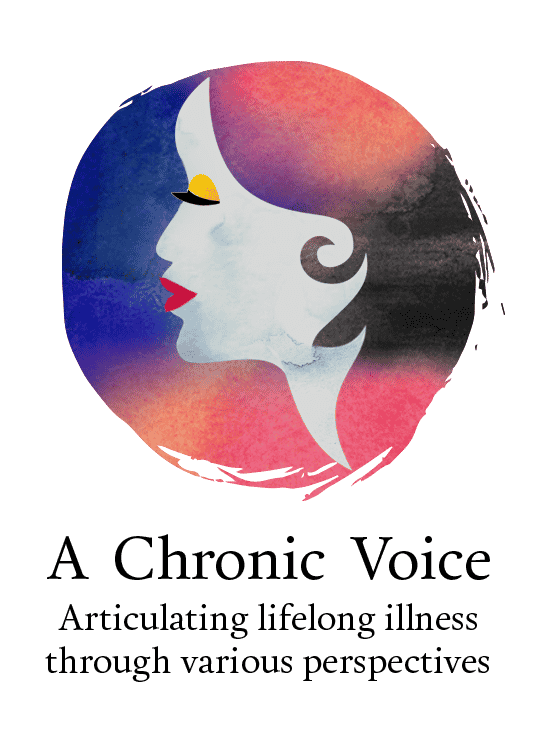
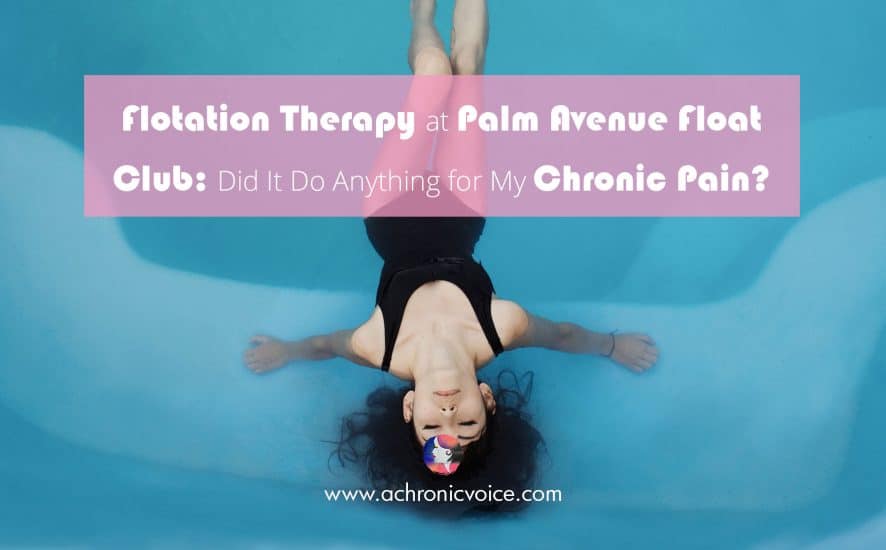

I was surprised to see that you don’t have many comments on this post. Glad I can add to it. First of all, I’m so glad you pointed out that most bloggers who have written about this are caucasian women with fibromyalgia. We don’t hear from anywhere near enough Asian bloggers and I think that’s a huge gap. I’ve noticed it for years, but just chalked it up to me being here in a sea of Chinese.
I was also offered a free floating session and had the same feelings as you about it. I DO NOT like being in enclosed spaces, but I felt good afterwards. My husband ended up buying a Japanese style bathtub for me and I buy 50 pound bags of Epsom Salts and Magnesium Chloride Flakes so I can ‘float’ three times a week at home. It’s worth the investment and I don’t have to go anywhere. It’s, by far, the best relief treatment I can give myself. Plus home spa! Reading while floating. My skin is great and it helps with sleep. So I’m fine with skipping the $90 price tag and all for saving myself trips out of the house when I can do it here, even if it is a bit ghetto compared to those fancy float pods!
Hi Carrie, haha my posts tend to not get heaps of comments in general perhaps! 😀 And it’s true…I love that you have been based in Taiwan for so long because there aren’t that many bloggers online I can talk to in regards to chronic illness and cultural stuff.
I love that you have a bathtub and DIY it! Whilst the amount of salt isn’t as much as a flotation pod, I bet it’s enough to relieve you of some pain and stress! I don’t have a bathtub unfortunately. But would love to go for a float again sometime soon! I had a bit of a scare the last time as I slipped after the shower there and bruised my back (with a blood clotting disorder that’s always scary)…haven’t been back since but I just need to be more careful haha.
When we moved, we made sure to find a place with a proper tub, so now we enjoy a hot spring style bathtub in our new home and the weather is finally cool enough to enjoy it. But I’m terrified of the stone steps going into it and out. Yes, it’s so scary when you slip!
I agree, it’s great to be able to talk to someone else here who gets it! Approaching 20 years in Asia. Feels very weird!
I’ve always wondered if this worked. I love how I feel when I’m floating in the pool, so I thought it might be helpful for me. It does look incredibly relaxing!
Hi Shelley, it’s a very different experience from floating in a pool but still very relaxing, maybe even more so! Let me know what you feel and think about it if you do try it out!